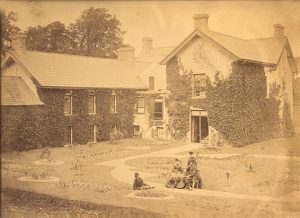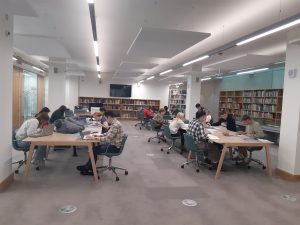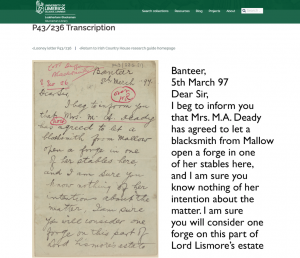New online Irish Country House research guide

P6A/966 Armstrong collection: photograph of Moyaliffe Castle showing the south wing and garden, with Captain Edward Armstrong and his wife Frances née Steele seated on a bench [c1870s]. © Glucksman Library, University of Limerick.

History students transcribing primary sources at The Special Collections and Archives Department, Glucksman Library, University of Limerick.
Final (fourth)-year History students taking this elective module in 2024/25 visited Archivist Anna-Maria Hajba in the department reading room to choose an archival letter, or set of letters, from the wide variety of estate paper collections at the Glucksman Library. Based on their chosen primary source, the module assignment required them to produce: a document analysis (what the document is about, and why it is important); observations on their research journey (how they went about their research, what they found interesting and difficult, and why); the context of the document (the collection it comes from, the history of the item); a transcription of the item; and a bibliography of the primary and secondary sources referenced. Samples of three students’ work from this module were then repurposed to create the new online Irish Country House research guide.

Screenshot from the new online Irish Country House research guide of letter P43_236 transcribed by a University of Limerick History student.
Dr Kirsten Mulrennan, Archivist for Engagement, Exhibition and Outreach, works closely with UL faculty to embed its collections on a variety of academic programmes at the university, and to create a range of online research resources on the department website specialcollections.ul.ie. This module, and its associated research guide, provides a useful example of the potential of collaboration between university faculty and library staff. The guide is designed to provide working examples for incoming students, tackling any ‘archival anxiety’. It demonstrates how archival collections can be embedded in academic programmes, both to enhance student coursework, and to build transferrable skills, such as critical thinking and information literacy.